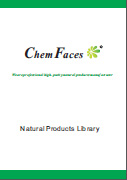| Description: |
Artesunate is a part of the artemisinin group of agents with an IC50 of < 5 μM for small cell lung carcinoma cell line H69. It is a potential inhibitor of STAT-3 and exhibits selective cytotoxicity of cancer cells over normal cells in vitro; A potent inhibitor of EXP1.Artesunate has anti-inflammatory activity, can prevent neuroinflammation in BV2 microglia by interfering with NF-κB and p38 MAPK signalling. |
| Targets: |
NF-kB | p38MAPK | IFN-γ | IL Receptor | PGE | COX | TNF-α | IkB | TGF-β/Smad | gp120/CD4 | Antifection | IKK |
| In vitro: |
| Curr Top Med Chem . 2016;16(22):2453-63. | | Artesunate as an Anti-Cancer Agent Targets Stat-3 and Favorably Suppresses Hepatocellular Carcinoma[Pubmed: 26873192] | | Abstract
Background: Aberrant signal transducer and activator of transcription 3 (STAT-3) molecular signaling elicit hepatocellular carcinoma (HCC) in humans. Therefore, targeting STAT-3 is considered as an attractive option towards suppression of HCC in humans.
Objective: Our objective is to identify a potential small molecule inhibitor that can specifically target STAT-3 and suppress HCC.
Methods: In this study, we analyze a group of sesquiterpene lactone (STL) candidates that has been recently reported in preclinical trials against cancer by a unified computational and experimental approach.
Results: Our virtual analysis of the STL candidates revealed Artesunate (ATS) as the best potential inhibitor of STAT-3 with comparable potency to specific inhibitor S3I-201. We also observed that ATS inhibited IL-6 driven STAT-3-DNA binding activity with comparable potency to S3I-201 in a cell free system. Furthermore ATS was observed to interfere with STAT-3 dimerization and suppression of both constitutive and IL-6 inducible STAT-3 in vitro. Nevertheless, we also observed that ATS modulated STAT-3 dependent targets (procaspase-3, Bcl-xl and survivin) favoring occurrence of apoptosis in vitro. Overall, the putative inhibition of STAT-3 by ATS suggested its capacity to interfere with STAT-3 dimerization by binding to the SH2 domain of STAT-3 monomer. It resulted in suppression of STAT-3 and also favored promotion of in vitro cells towards apoptosis. Consequently, ATS also exhibited selective cytotoxicity of cancer cells over normal cells in vitro.
Conclusion: All the above observations substantiated by unified computational and in vitro experimental approaches suggested its potential role as a therapeutic anti-cancer agent against HCC. |
|
| In vivo: |
| Mutat Res Genet Toxicol Environ Mutagen. 2015 Jan 1;777:1-6. | | The antimalarial agent artesunate causes sperm DNA damage and hepatic antioxidant defense in mice.[Pubmed: 25726169] | Artesunate is an artemisinin derivative effective against multidrug resistant malaria.
METHODS AND RESULTS:
We analyzed the effects of artesunate 40 mg/kg b.w. as a single dose (ART1) or 13.3mg/kg b.w. for 3 days at 24h intervals (ART2) on mice spermatozoa at morphological and molecular level, and hepatic antioxidant status following 24h and 35 days following exposures in vivo. Artesunate significantly reduced epididymal sperm count and increased the frequency of sperms with abnormal head morphology following 24h of exposure. Comet assay analysis revealed significant increase in DNA strand breaks in spermatozoa evidenced by about 3-fold increase in comet tail DNA and up to 10-fold increase in Olive tail moment following 35 days of artesunate treatment. The damage index was significantly higher in the treated groups (40.27 ± 6.62 and 37.07 ± 5.35 for ART1 and ART2 respectively) as compared to the control group (16.13 ± 3.21) indicating the genotoxic effect of artesunate. The significant reduction in GSH, SOD and increase in lipid peroxidation indicate involvement of oxidative mechanisms in artesunate induced toxicity in mice.
CONCLUSIONS:
The present study suggests that artesunate has the potential to breach the testis-blood barrier and cause toxicity to male germ cells which may have implications in male reproductive toxicity. | | Br J Clin Pharmacol. 2015 Apr 15. | | Opposite malaria and pregnancy effect on oral bioavailability of artesunate - a population pharmacokinetic evaluation.[Pubmed: 25877779] | To compare the pharmacokinetic properties of Artesunate and dihydroartemisinin in the same women: i) pregnant with acute uncomplicated malaria on day 1 and 2, ii) pregnant with convalescent malaria on day 7 and iii) in a healthy state 3 months post-partum on day 1, 2 and 7.
METHODS AND RESULTS:
Nonlinear mixed-effects modelling was used to compare plasma concentration-time profiles of Artesunate and dihydroartemisinin over 7 days of treatment following oral and intravenous Artesunate administration to pregnant women with uncomplicated Plasmodium falciparum malaria during their second or third trimesters of pregnancy. The same women were restudied three months after delivery when fully recovered. Non-compartmental results of the same study have been published previously.Twenty pregnant patients on the Thailand-Myanmar border were studied and 15 volunteered to be restudied three months post-partum. Malaria and pregnancy had no effect on the pharmacokinetic properties of Artesunate or dihydroartemisinin after intravenous Artesunate administration. However, malaria and pregnancy had opposite effects on the absorption of orally administered Artesunate. Malaria increased the absolute oral bioavailability of Artesunate by 87%, presumably by inhibiting first-pass effect, whereas pregnancy decreased oral bioavailability by 23%.
CONCLUSIONS:
The population pharmacokinetic analysis demonstrated opposite effects of malaria and pregnancy on the bioavailability of orally administered Artesunate. Lower drug exposures during the second and third trimesters of pregnancy may contribute to lower cure rates and thus the development of drug resistance. Dose optimisation studies are required for Artesunate containing ACTs in later pregnancy. |
|
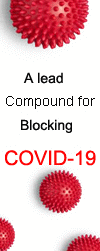
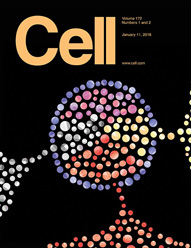 Cell. 2018 Jan 11;172(1-2):249-261.e12. doi: 10.1016/j.cell.2017.12.019.IF=36.216(2019)
Cell. 2018 Jan 11;172(1-2):249-261.e12. doi: 10.1016/j.cell.2017.12.019.IF=36.216(2019)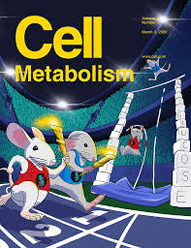 Cell Metab. 2020 Mar 3;31(3):534-548.e5. doi: 10.1016/j.cmet.2020.01.002.IF=22.415(2019)
Cell Metab. 2020 Mar 3;31(3):534-548.e5. doi: 10.1016/j.cmet.2020.01.002.IF=22.415(2019)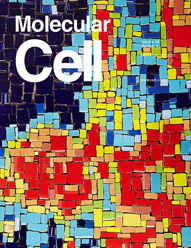 Mol Cell. 2017 Nov 16;68(4):673-685.e6. doi: 10.1016/j.molcel.2017.10.022.IF=14.548(2019)
Mol Cell. 2017 Nov 16;68(4):673-685.e6. doi: 10.1016/j.molcel.2017.10.022.IF=14.548(2019)